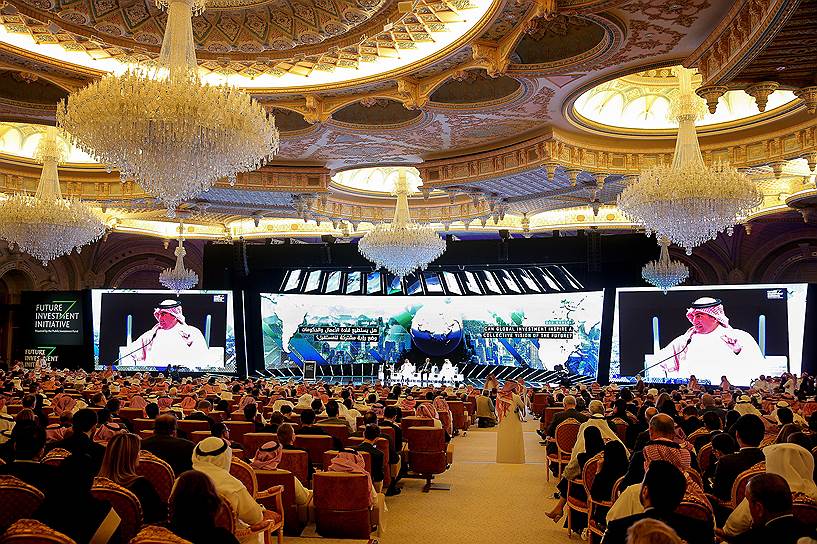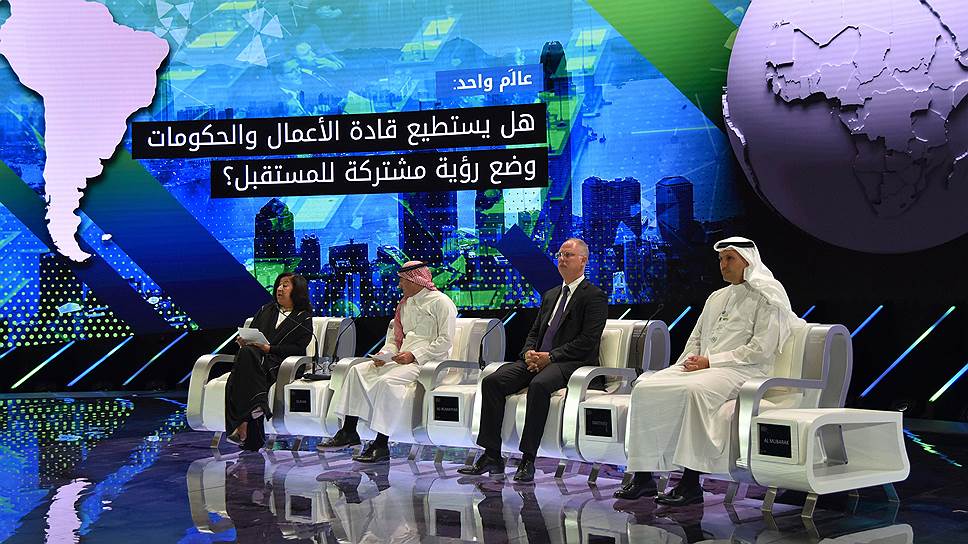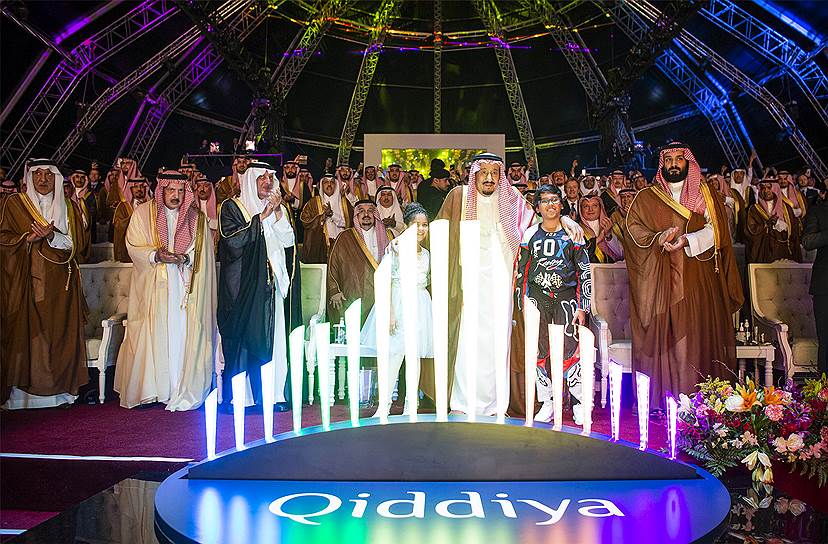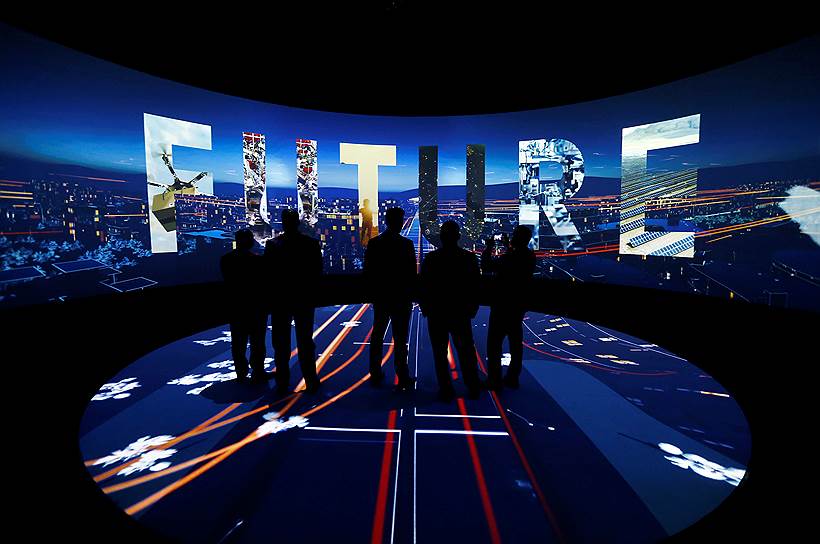Mixing geographic maps
аgenda
WHAT CAN BE BUILT AND WHAT IS NECESSARY TO BUILD? THE SECOND EDITION OF THE FUTURE INVESTMENT INITIATIVE FORUM (FII) TOOK PLACE IN RIYADH IN OCTOBER 2018. THE FORUM LAUNCHED THE GLOBAL DEBATE ON HOW TO MOVE AWAY FROM THE IDEA OF «INVESTMENTS FOLLOW SOCIAL DEVELOPMENT» TO HOW DO WE CREATE THE FUTURE CONSCIOUSLY AND RESPONSIBLY. "DAVOS IN THE DESERT" TURNED OUT TO BE "DAVOS VICE VERSA" — THIS IS THE FIRST EXAMPLE OF A GLOBAL ECONOMIC FORUM BASED ENTIRELY ON PROACTIVE PLANNING FOR THE FUTURE, AND NOT IN RESPONSE TO ALREADY EXISTING CHALLENGES.
DAVOS VICE VERSA
A year ago, after the opening session of FII, the forum was internationally dubbed as «Davos in the Desert». Literally, this is inaccurate: Riyadh with a population of 8 million people is one of the largest cities in Asia with a more well-developed infrastructure than any other city of comparable size in the region. In general, it is much easier to confuse the downtown hotels in Riyadh with the downtown of New York or Shanghai than with the small mountain resort of Davos Klosters. However, this is not the main point. Davos in the Desert as an international economic forum and its participants are what really resemble the world economic forum held in Davos — the same CEOs of the largest world companies and politicians in semi-private settings, the same media outlets, the same official delegations, and the signing of contracts and memorandums. It also seems to follow the same principle: HRH Prince Mohammed bin Salman bin Abdulaziz, the Crown Prince, Vice President of the Council of Ministers and Minister of Defense, when announcing FII-2018 a year ago, declared, «We invite only those who have a rich imagination.» Visionaries have been the main official guests of the World Economic Forum (WEF) in Switzerland for many years now. Since the 1990s, the WEF in Switzerland has become the key place for economists, sociologists and businesses to discuss future global trends. The WEF and the FII forums are in many ways similar but FII is much more clearly focused on identifying the priority areas for innovative development and on a visionary glimpse into the future. While most of the major world economic forums discuss what can be done concerning the existing world problems, the basis of the FII agenda is completely different: how can economies and states influence future world development? How can they create new trends consciously and rationally, and not just react to existing ones?
A FUTURE THAT CAN BE CREATED
According to the Minister of Energy, Industry and Mineral Resources of Saudi Arabia Khalid A. Al-Falih, the 3,000 FII participants in Riyadh, including representatives of major American and European companies, are a rather worthy demonstration of the importance of the forum’s agenda. Particularly, the Minister highlighted the participation of key players from Russia and China. From the oil and investment perspective the forum turned out to be extremely productive, with a total worth of agreements and contracts signed exceeding $ 55 billion, including major energy and utilities infrastructure investments in Saudi Arabia. The key takeaways from FII 2018 include the idea that perhaps the traditional economic reality is coming to its end. Many global investment market players have new technologies and financial capabilities at their disposal that will allow them to change the concept of the global economic geography of the world in a few decades. The changes will be related to the location of technological development centres, cultural capitals and the traditional balance of world cultures, transport hubs and links, and community structure. These features will be implemented one way or another. The question is — how these opportunities can be used? For what? To what end? It is a very unusual way of looking at things in terms of European business culture. European economic history, unlike the traditional Islamic one, generally gives the state the monopoly to rule economic geography — New cities are founded by states, new economic provinces are a product of state regulation, society gratefully goes along with the opportunities offered by governments and businesses. Saudi Arabia, at first glance, is almost following the same pattern. However, Vision 2030, which was announced in 2016 and now being implemented (see p. 11), is an unusual development plan for a country in this sense. One of the most ambitious development programs in the world is not built on the basis of transformation of the state sector of the Kingdom of Saudi Arabia, but on the development of Saudi society. It is about finding ways of modernizing the traditional society. It is not surprising that future unusual trends that combine economics, technology and sociology were discussed in Riyadh. The general question «what resources should be used to build the future?» is not relevant here, the more important question is — «what exactly can be built?»
GEOGRAPHY OF INNOVATION
The main topic of the panel discussion of the three-day forum was devoted to globalisation, but from a different perspective — the joint view of business and government creating a collective vision of the future. However, it is more a dream than a reality, since the 2000s the futuristic views of states and large international companies have differed significantly. Meanwhile, the corporate point of view on the future is gradually becoming more similar to the view of the authorities of large metropolitan cities in the United States, Europe and Asia.The topic of the geography of innovation is also unusual. After several decades of experimentation by large investment banks with alternative centres for innovative technological development (usually in the Third World countries, the most famous of which are projects in India), the idea that the future geography of innovation can be managed by investment decisions, sounds, on the one hand, like a challenge, on the other like a statement.
Vision 2030 plans its future precisely on these issues. Imagine that the Arabian Gulf is interested in its own future as one of the centres of world technological civilization, as a collection of large ultra modern cities, no less significant than the largest cities of the World, no less developed from any point of view, no less influential in matters of the world agenda, determining on equal terms the cultural and social trends that create the world’s fashion (and that’s how Vision 2030 defines the role of "new cities" on the Arabian Peninsula see references). Now imagine a world in which there are 50 more such cities and they arise not where we are accustomed to seeing them, but how they emerged in the 12-15th centuries — from the Malabar Gulf to Somalia, from the Malacca Peninsula to Philippines, in China, in Central Asia, in South America, in the centre of Africa. What will this world be like? What could this world be like? What should be done to create this world? Will it be more comfortable, safe and more cultured than the existing one? This, in fact, is the main agenda of FII.
HOW SOCIETY WILL CHANGE ITSELF
The further Another four major topics discussed in Riyadh were relatively well-known in the intellectual community and apparently, will soon become mainstream in global discussions of the future. Not only are these topics interesting in themselves, but their selection and coexistence as the main topics on the «Davos in the Desert» agenda is also pertinent. These issues include health care, immersive technology, the future of cities and the sustainable development of the poorest countries. Individually, these topics have been studied rather in-depth, for example, by the World Bank. However, combining them together had a rather unusual effect — in this case the focus is on the future of society and how the business of the future will play its role in it. In the field of sustainable development, a most notable moment at FII was the discussion involving the CEOs of the large corporations such as Siemens, Saudi Aramco and Nestle about their vision of the implementation of the UN Sustainable Development Goals program. It was a provocative subject to some extent, as transnational companies made a greater contribution to the development of all social aspects of life in the Third World countries than governments. This contribution is sometimes perceived as invisible and rather chaotic, although it is clear that pharmaceutical and baby food companies have done more for the demographic development of Africa and Southeast Asia than any other global state institution since the 1970s. The discussion in Riyadh was interesting primarily because it is one of the few places in the world where participants are ready to talk about interests and concerns of transnational business outside the usual framework of the «power-business» relationship.
Healthcare problems were also been discussed in depth. The main conclusion was that soon increased life expectancy and development of medical technology will come together and potentially disrupt human physiology as we know it today. This is no longer a matter of philosophy but literally practical issues — What will an ultramodern metropolis with an average life expectancy of 75 years and with a fully-functioning standard healthcare system be like? What will be in demand in this city? And in this regard, how should we build such new cities so that they will be not only a place to live but also incubators of new disruptive technologies? These questions are not easy to answer. In the modern world, innovation and high life expectancy are considered opposing concepts, the technologies of the future are created by young people (despite the fact that people must be experienced innovate).
The closing topic of FII was immersive technologies. Due to the rapid development of immersive technologies and augmented reality, the world is changing faster than ever in the history of civilization. How can societies influence the development of such technologies in order to «squeeze out» the maximum gain for their well-being? How will immersive technologies affect ideas about social disparities, how will they interact with infrastructure inequality?
The main value of «Davos in the Desert» is that these issues were not discussed in a theoretical way, but in investment terms — Where should we invest in order to influence these processes? What can be achieved? The presence of Russia in Riyadh in this sense was a very good sign. Kirill Dmitriev, head of the Russian Direct Investment Fund, said at FII, «We believe that this conference can create many opportunities for Saudi Arabia, we are amazed at the changes that have occurred in the Kingdom in the last two years» (for cooperation between the RDIF and Saudi Arabia, see p. 10). These changes, in fact, were behind FII becoming such a phenomenon, and one that will certainly continue evolve.
WHY DOES SAUDI ARABIA BUILD NEW CITIES?
The Kingdom of Saudi Arabia (KSA) is one of the most urbanized countries in the world, where the migration of people to the largest cities occurred very early. Vision 2030 identified several large urban projects, which in the future should transform the Saudi economy and ecosystems. First of all, the NEOM project — the «city of technologies», a centre of technological development, with a total investment of up to $500 billion. It will probably be the first metropolis in the world with a population of 1 million built in such a short period of time. NEOM could become a global testing ground for the development of all the technologies associated with such projects, since there are only few alternatives in China and, possibly, India. In addition, KSA is planning to invest in a huge resort area on the Red Sea coast. In fact, it is going to be a new world centre of global tourism, which will be larger than the Egyptian projects in Sinai and on the African coast of the Red Sea, providing recreational opportunities for the entire European Union. Finally, there is the Qiddiya project — a new sports and cultural centre for the Riyadh megalopolis. This project was launched in April 2018 one year later than the other two projects however it is of equal importance with the NEOM project and the resort area of the Red Sea coast. Aimed at young people and women, Qiddiya is considered as the future driving force behind of the cultural transformation of society in Saudi Arabia.





